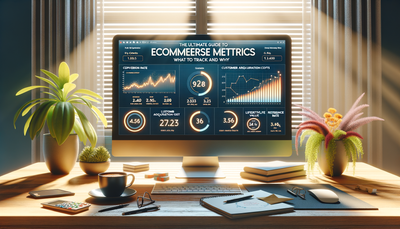Developing the Right Small Business Pricing Strategy
Setting the right price for your small business' products or services is critical for success. Developing a pricing strategy requires a thorough understanding of your costs, the market conditions and your customers' buying behaviors. Pricing strategies can be incredibly complex but with thoughtful implementation, the right plan can serve as a guiding light for your profits.Table of Contents:

What is Pricing Strategy?
Pricing strategy is one of the most important aspects of any small business. It is a vital component of any marketing plan, and establishes the value of your goods and services in the eyes of the consumer. A good pricing strategy will maximize profits while maintaining affordability and attracting new customers.Small businesses need to develop their own pricing strategy to accurately convey the value of the products and services they provide. Every pricing strategy needs to consider the needs of the target market, the cost of goods or services, the competition, the economic climate, and other factors. The goal should be to find an optimal price point that will increase revenue and create a competitive edge.
Effective price strategies should also consider how other elements of the marketing mix, such as promotional tactics, interact with the pricing strategy. It’s important to have a strong brand so customers will recognize the value of the product or service and be willing to pay the price. Businesses need to understand the current market trends and be able to constantly adjust the pricing strategy to match fluctuations in demand.
The right pricing strategy can be the difference between success or failure for small businesses. With careful planning, businesses can optimize their pricing to ensure that they’re maximizing profits and staying ahead of their competitors.
Do you need a website? Want to build a website but don't know where to start? Our website builder is the perfect solution. Easy to use, and with the ability to customize to fit your business needs, you can have a professional website in no time.
Consider the Costs of Your Products or Services
When it comes to determining the right pricing strategy for your small business, it is important to consider the costs of your products and services. This includes accounting for the cost of supplies, labor and any other expenses associated with producing the goods or providing the services. Additionally, businesses should also account for overhead and other fixed expenses that are required to keep the business up and running. By considering all of these costs, businesses can ensure that their products and services are accurately priced to ensure profitability.Research Your Competitors
Researching your competitors is essential when developing the right small business pricing strategy. By understanding their products and prices, you can tailor your own business strategy to fill gaps in the market and offer customers a compelling value proposition. Examine their product offerings, pricing models, and discounts to gain valuable insights that can help inform your own decision-making.Look closely at their website, review any competitor newsletters and emails, and search their social media channels to get a better understanding of their strategy. Don't forget to include competitor reviews and ratings—it’s important to know what customers are saying about your competitors so you can differentiate your own business.
Additionally, scan the market to find out how prices are fluctuating. Keep track of your competitors' prices and watch for any changes in the industry to adjust your strategy accordingly. With the right information, you can develop an effective small business pricing strategy.
Building a website with SITE123 is easy
Evaluate Your Customers' Buying Behaviour
Evaluating the purchasing behaviour of customers is important for any small business looking to create an effective pricing strategy. By understanding how customers shop, small business owners can set prices that are attractive to the customer. Identifying shopping patterns, understanding how price is taken into consideration when making purchasing decisions and determining when discounts are most effective are all important components to consider. Additionally, understanding customer loyalty and how small businesses’ loyalty programs benefit customers helps set prices that are fair and build long-term customer relationships. Ultimately, evaluating customer buying behaviour is the foundation that small business owners need to develop the right pricing strategy.Introduce Variety to Customers
To ensure customers are satisfied, small business owners should aim to introduce variety in their pricing strategies. This could be achieved through different payment plans, discounts and package deals. For example, offer discounts to customers who buy in bulk or offer package deals that group several items together at a discounted rate. This way, your customers can save money while buying multiple items, leading to an increase in sales. Additionally, some customers may prefer the convenience of making a single payment instead of several separate ones. Consider including this option in your pricing strategy as well. Lastly, reward loyalty with loyalty programs and coupons. This reinforces customer loyalty and encourages new customers to purchase from your store.Increasing Prices
The cost of goods and services is constantly rising, and as a result small business owners must be vigilant to ensure their prices are good. To develop the right small business pricing strategy, you must be aware of the market factors driving prices. Increasing prices can have pros and cons - it can increase the perceived value of your products and boost profits, but it can also lead to customer alienation if done too abruptly or excessively.By understanding market trends, you can develop pricing strategies that are more aligned with customer expectations. Monitor your competitor prices and keep an eye on the industry news to gain insight into how certain products or services are being priced. This will help you make well-informed decisions about increasing or decreasing prices in order to stay competitive.
Make sure you communicate any pricing changes to customers, so they understand the full context. Also, consider offering incentives to customers during price increases. This can help to make the change easier and demonstrate that your business values them.





